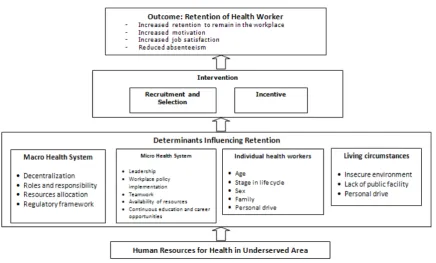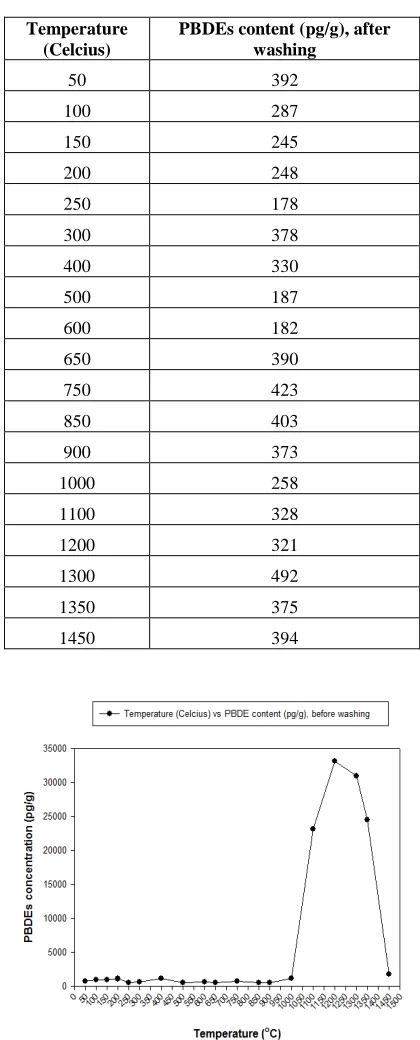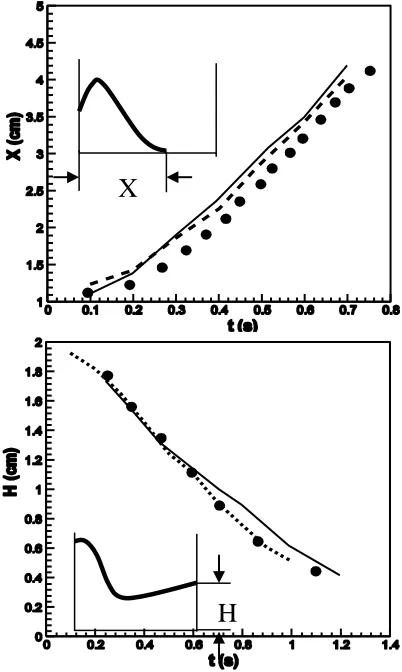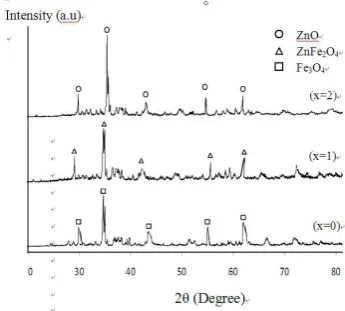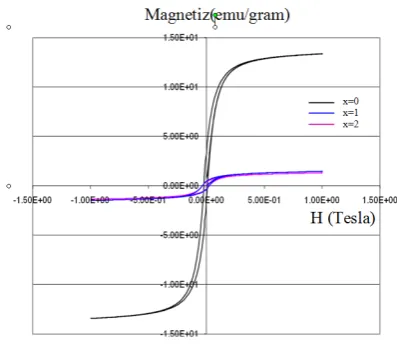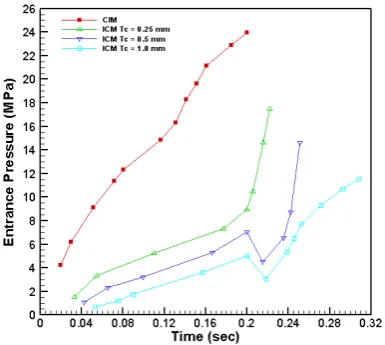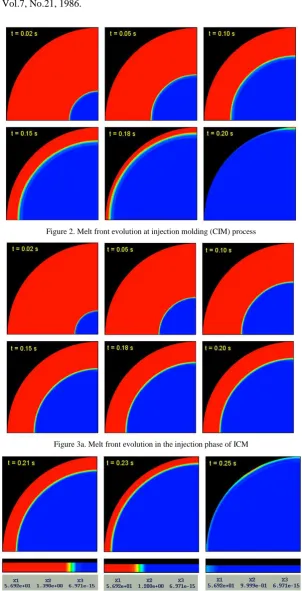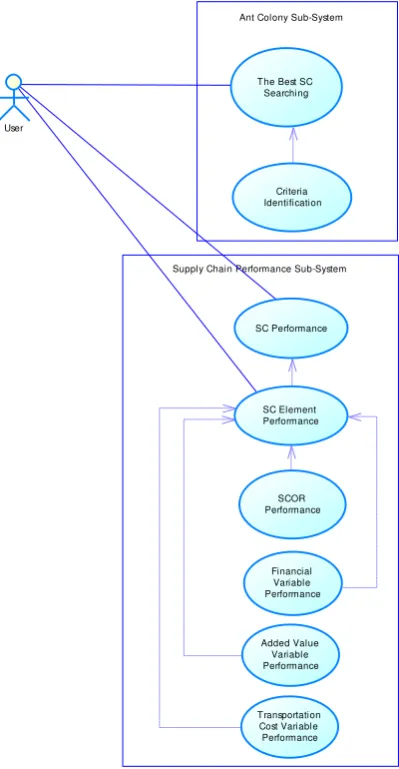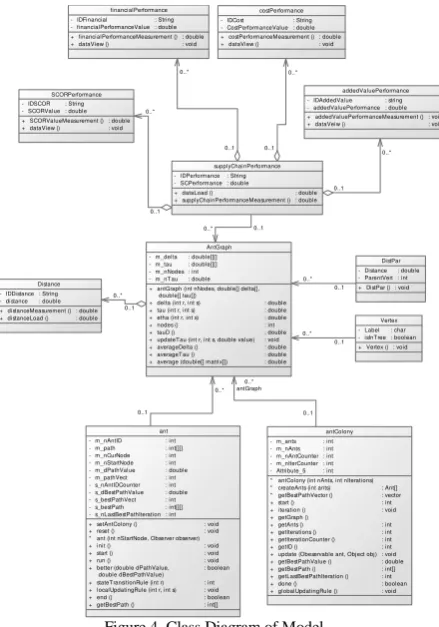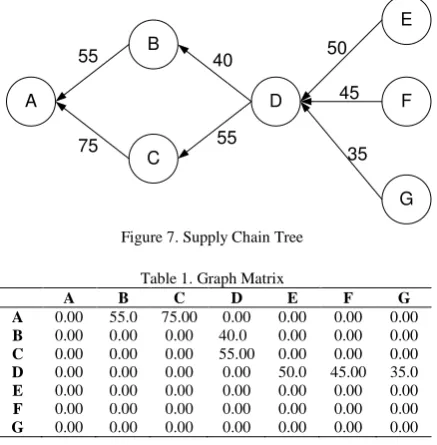The Second Annual Indonesian Scholars
Conference in Taiwan
March 19
th
, 2011
The 2nd Annual Indonesian Scholars Conference in Taiwan
iii
Editorial Board
Social and Culture & ICT Fields
1. Dr. Eng Khoirul Anwar
2. Nur Aini Rakhmawati, S.Kom., M.Eng.Sc., PhDc
3. Paramitaningrum, S.Sos, PGDip, PhDc
4. Ratna Sari Dewi, S.T., MT., PhDc
5. Junaidillah Fadhlil, S.T, MT., PhDc
6. Lalu Muhamad Jaelani, S.T, M.Sc.
Management Field
7. Ahmad Helmy Fuady, S.E, MIDEC, PhDc
8. Nurul Indarti, S.E, Siviloekonom, Merc. PhDc
9. Retno Widowati PA, MSc
Engineering Field
Agriculture Field
16. Ir. Ari Handono Ramelan, M.Sc. (Hons), PhD
17. Dr. Krissandi Wijaya, S.TP., M.Agr.
18. Dr. Ir. Arman Wijonarko, M.Sc.
19. Prof. Dr. Ir. Ali Khomsan, MS.
20. Katrin Rosita, SP, M.Si
21. Dr. Ir. Yudiwanti Wahyu Endro Kusomo, MS.
22. Dr. Ir. Hamim, Msi
23. Dr. Achmad
The 2nd Annual Indonesian Scholars Conference in Taiwan
v
President of Asia University‘s Speech
Dear Participants,
As you are preparing for the Annual Indonesian Scholars Conference in Taiwan
(AISC-Taiwan), I would like to take this opportunity on behalf of Asia University to welcome you to
our campus. As globalization develops and Asia University goes international, a conference
of this nature and scope will become a reality and even a necessity. Now Asia University has
as many as 190 international students from 12 countries, an achievement indeed, given its
relative short history. Of the 12 countries, Indonesia has the second largest student population.
As the mission of AISC-Taiwan clearly states, it aims to foster cross-cultural exchange and
understanding, and Asia University, as its outstanding sponsor, is happy to provide the
platform to help Indonesian scholars here in Taiwan and back at home to gather together to
generate new ideas to promote research related in Indonesia. I believe this conference will
offer you great opportunities to share cutting edge knowledge concerning all facets in a
country‘s development. I can also foresee some new though
ts and renewed enthusiasm for
collaborative research and international academic exchanges will follow suit in the wake of
this conference. Please take your time to enjoy a peaceful and invigorating stroll along our
eye-catching campus while you are here. I wish this conference a big success.
The 2nd Annual Indonesian Scholars Conference in Taiwan
vii
Chairman of AISC-Taiwan
‘s Speech
Dear Ladies and gentlemen,
The Honorable Former Minister of Agriculture of Republic of Indonesia
Dr. Ir. Anton Apriyantono, MS
The Honorable Head of the Indonesian Economic and Trade Office to Taipei
Drs. Harmen Sembiring
The Honorable Deputy Dean of International College of Asia University
Mr. Chen
The Honorable Assistance of International College of Asia University
Miss Ann Chiang
The Honorable the Head of Indonesia Muslim Student Association in Taiwan
Agus Andria, S.Si, M.Si, PhDc
The Honorable Prof. Naoshi Kondo from Kyoto University, Japan.
The Honorable Dr. Jen-Chyuan Lee, Director of Food and Fertilizer Technology Center.
The respectable participants
And all the committee of 2nd AISC-Taiwan whom I respect
On behalf of organizing committee of 2nd AISC-Taiwan. I have some points in my speech:
First of all, we would like to welcome all of you to Taiwan, to Asia University and to this
event, happy conference and wish you have a good time during this event.
And then we also would like to say thank you so much for the keynote and plenary speakers
and participants for joining this event, we do hope we can get a positive feedback from this
event.
also would like to say thank you for the Indonesian Economic and Trade Office to Taipei for
the help.
And then I as a head of organizing committee would like to say many thanks to Organizing
committee member of 2nd AISC-Taiwan for their effort in preparing everything for this
event, they are the heroes for this event because they
‘ve done
their responsibility.
Last of all, hen gaoxing renshi ni men, nice to meet you all, thanks for your attention, have a
great day.
Kind regards,
David Agustriawan
Table of Contents
Social, Linguistic, and Culture ... 1
Comparative Study of Indonesia and Taiwan Community Forest ... 3
Enhancing The Agricultural Sector by Promoting The Social Investment ... 7
Inter-Stakeholders Collaboration for Mangrove Preservation: Solution for Global Warming Mitigation ... 13
Managing Human Resources for Health Indonesia‘s Country Border ... 19
The Difference of Forgiveness Between College Students Who Practice AIKIDO and Those Who Do Not In Jakarta ... 27
The Role of Social Capital in Developing Rural Area: A Case Study in Petungkriyono Community ... 33
Economy, Management, and Business ... 41
Effect of Servant Leadership on Knowledge Characteristics ... 43
Relationship Between Job Satisfaction and Life Satisfaction Among Female Indonesian Migrant Workers in Taiwan ... 51
Seloharjo Business Centre: A Lesson Learned for Jatropha Agriculture Program Based on Community Empowerment ... 59
Engineering (material and manufacture, electrical and automatic control, energy) ... 65
Backcalculation Analysis on Falling Weight Deflection Data for Elastic Modulus Measurement on Pavement Structure ... 67
Low Cost Light Source for WDM-PON based On Injected Taper FP-LD ... 73
Management Decision Making for Extended Crow Method to Predict Reliability of Ship Oil System ... 77
Reduction and Reformation of Polybrominated Diphenyl Ethers (PBDEs) During The Heating Process for Non-washing and Washing Ashes ... 83
Smoothed Particle Hydrodynamic Model for Dam Break Problem With Obstacle and Obstacle-Clearance .... 87
Structural Transition and Magnetic Properties of ZN-doped FE3O4 by Co-precipication Method ... 91
Three Dimension Simulation of Injection-Compression Molding Process of Disk ... 95
ICT (Information Technology, Computer, and Telecommunication) ... 99
Ant Colony Algorithm based Generic Model for Supply Chain Performance Measurement ... 101
Artificial Neural Network to Measure Phosphorus Amount in Agricultural Soils ... 109
Sparepart Inventory Management based on Reliability at Petrochemical Industry (PKG) ... 115
Agriculture... 121
An Investigation on The Removal Efficiency for Metal Ions From Porous Sand-packed Columns by A Biosurfactant with The Foam-enhanced Flushing Technique ... 123
Bioethanol From Lignocellulose by Pretreatment Method and Using Clostridium Thermocellum ... 127
Chlorella Sp. Culture as A Source of Protein for Fish Larvae ... 135
Development Planning of Agricultural Sector (Agropolitan Approach in Wonosobo Regency) ... 139
Effect of Dipping into Chitosan Solution on Wet Noodles Properties ... 143
Estimation Aboveground Biomass and Biodiversity in The Peat Forestry District at Block C and C of EMRP, Central Kalimantan ... 149
Functional Ready-to-drink Beverage from The Mixture of Nutmeg Extract and Crushed Nata de coco as Antiinsomnia and Dietary Fiber Source ... 155
Impact of Socio-ecology Interaction on Local Food Security and Food Culture ... 159
One Phase Bioethanol Production Using Bacterium Clostridium Thermocellum with Raw Materials Industrial Waste Agar (gracillaria sp.) ... 163
Organic Farming in Indonesia: Between Chance and Challange ... 169
The 2nd Annual Indonesian Scholars Conference in Taiwan
xi
Keynote Speaker
Former Minister of Agriculture of Republic of Indonesia
Dr. Ir. Anton Apriyantono, MS
“
Roadmap of Indonesia Agriculture : The strategy to improve food
self-sufficiency and global competition
”
Plenary Speakers
Plenary Speaker 1:
Director of Food and Fertilizer Technology Center.
Dr. Jen-Chyuan Lee
“Develop a competitive, market-oriented agriculture industry with the support of
advanced technology”
Plenary Speaker 2:
Vice Rector of Business and Communnication Affairs of Bogor Agricultural
University, Indonesia
Dr. Ir. H. Arif Imam Suroso, MSc.
“
Strategy to enhance the competitiveness of national agricultural industry in the
ACFTA era
”
Plenary Speaker 3:
Professor for the Division of Environmental Science & Technology, Graduate School
of Agriculture, Kyoto University, Japan
Prof. Naoshi Kondo
Sec 1
COMPARATIVE STUDY OF INDONESIA AND TAIWAN
COMMUNITY FOREST
Desi Trianingsih; Ajeng Anggraeni
Department of Forestry and Natural Resources, Faculty of Agriculture, National Chiayi University Email: desi_salazar_22@yahoo.com; ajeeeng_87@yahoo.com
ABSTRACT
The community forest based for forest management has been viewed as the most effective for forest conservation. In the most recent years many countries has develop the forest management through community forest, nor Taiwan and Indonesia. Even the preparation of community in Taiwan was younger than Indonesia, the result for forest conservation effectiveness of Taiwan have to learned more to Indonesia. Therefore, there are several different procedure of manage the community, which is impact to the community capability and result from the community establishment background.
Keywords: community forest, procedure, Indonesia, Taiwan.
1
INTRODUCTION
Indonesia is a country of many diversities, in 1980 have been declared as mega-diversity country together with Brazil, Columbia, Mexico, Zaire and Tanzania, within land that consist of 13,000 islands at archipelago, and have population of 215 million people (Moeliono et al 2010). As known before that Indonesia not only home for many varies of plant and animals diversity but also etnic-social-culture (tribe), that still reference to traditional norms and untouched with political roles in the countries. Their humble livelihood, bring many activities that support for forest conservation than exploitation. Exemplifies of Indonesia tribes were Dayak (Kalimantan), Asmat (Papua), Togutil (Halmahera Island-Maluku), etc. Those information of biodiversity given many perspectives, through conservation and also exploitation due to many needed that can be get and solved by this common-pool resources.
Since there are many demolition of forest through human intervention, today many countries are focused on forest conservation. The forest conservation is generally developed by government, then the application based on local knowledge are commonly used for effectiveness of forest
conservation or rehabilitation. Indonesia that has been develop forest conservation based on community forest (social forest) since 1980 (Hindra 2007), while Taiwan was develop it at 2002 (Wang 2006), but the progress of community forest in both countries has many different result. Then the application of this study hopefully can learn more about the comparation and differentiation of both kind of forest management in community forest, which will be impact to the effectiveness of forest conservation, economy enhancement, and also social linking based on the forest community.
2
METHODOLOGY
This comparative study of community forest Indonesia and Taiwan was focused on the procedure, process and result of the community forest development. Those information basically based on literature study and fieldtrip survey.
3
RESULT AND DISCUSSION
3.1
Indonesia Approach
Indonesia community forest are regulated by many policy which is regulated by Ministry of Forestry (MoF) MoF Decree No. 622/Kpts‐ll/1995, MoF Decree No. 677/Kpts‐ll/1997 improving MoF Decree No. 622, MoF Decree No. 31/Kpts‐ll/2001 improving MoF Decree No. 677. Based on Argo Mulyo Local Community Forest, the decision of community were based on notarized letter No. 10/2003 on 14 May 2003 (Hindra 2007). The community forest that have been doing in Indonesia can be provided by community itself (self-governance) or partnership with concessionaire. Since the objectives of the development of community are to improve the social, ecological, and economic value, the implementation of community forest resulting a vary condition.
resources at the area. If the community were accepted as the formal community that can manage their forest themselves, they can utilize the district, environment, and non-timber harvested. They also can harvest the timber and non-timber production of the resources (Peraturan Menteri Kehutanan 2009).
Konawe Selatan district is one of the districts in South East Sulawesi Province The forest production area in Konawe Selatan covers 1,264,798 hectares, part of which is a degraded area
of 283,725 hectares. In the 1980‘s the area was
classified as production forest and was reforested with a teak wood plantation covering an area of approximately 38,000 hectares. At the start of the project the main goal was forest rehabilitation and community participation was not initially encouraged, except to serve as paid labor. Under Ministry of Forestry regulation No. 1/Menhut-II/2004, however, the area of about 15,112 hectares covered by a teak plantation was assigned to be managed by the community. The total number of community members involved in the work of this teak plantation is 1,360 families located in two sub-districts, scattered amongst 46 villages. The community manage the forest by followed principles of community foresty: sustainable and benefit, self sufficient, cooperation and partnership, transparency and integration, continous and gradual, local specific. This area also consider by stakeholders; government, NGO and community itself. The main strategy of the management consist of area management (to ensure the exixtence of a definable area by identification, inventory, boundary marking and mapping), business management (continuity of profitable by local business), and institutional management (independence of social institution as main actor of it).
Wirakarya Sakti (WKS) is a timber plantation holder with a concession area of about 251,218 hectares in Jambi Province. The timber
produced from the area supplies the company‘s
paper and pulp industry. The capacity of the factory is 430,000 tons per year and it is estimated to need about 1,935,000 cubic meters of Acacia logs per year to operate the factory at full capacity. The total timber plantation area is about 78,676 hectares. Part of the concession area could not be planted, though, because of a dispute over community ownership, leaving about 33% of the total concession to be managed under partnership schemes. The partnership scheme with WKS is based on land status. The patterns established are a Partnership in Private Forest (HRPK) developed under private land and a Partnership in Plantation Forest (HTPK)
established in Community land (lahan adat). The distribution of roles in providing production input among WKS and the community has two schemes. In the first, WKS maintains full control and all seedlings, fertilizers, infrastructure, technology and capital for the project is provided by the company. The community is involved by providing the input of land and labor. In this scheme, the business risk is born together by the company and the community. The net product is equally shared between the company and the community - 50:50. In this scheme, the company has control of the product. The second scheme gives full control to the community and seedlings, labor, and technology are provided by the community. The company provides a limited amount of technical guidance. In some cases, the company provides seedlings and credits. In this second scheme, all risk will be borne by the community. However, in this second scheme the community is free to sell its products to any company they choose, whereas in the first scheme the timber products must be sold to the cooperating company.
The 2nd Annual Indonesian Scholars Conference in Taiwan
5
3.2
Taiwan Approach
Taiwan community forest were generally centered by forest government, and it works locally through the forest government district. The procedure to establish a community forest is complicated. They have to prepare the forest management, before the community has allowed by forest district, they have to rehearsal for the development of the community for 2 years. If the rehearsal for the management forest at the area are succeed then the forest district can allow the community to get the formal regulation of the establishment. There are maximum three stages that community can be joined through the CFP (Community Forest Project). The first stage are four years, while the community get involved to the first stage they also can get the money to build up the community every end of the year (up to 100,000-200,000 NT$), but they also have to consider about the progress of the community that have to reported also. The focus of the first stage of the CFP are the consideration of encouragement of the community to get involved together to conserve the forest resources, which is unique at the community. Therefore the development of the community also require the social linking of the people to manage their forest and get the benefit of it.
The second stage of the CFP which is focused on the enhancement of economical benefit that can be obtain by community. Therefore in the second stage (if they accepted by TFB (Taiwan Forest Bureau)) they have to provide the detil explaination of the forest resources management that will obtain by the CFP. There are several main aspect as the goals of CFP in Taiwan, as natural resources, forest protection, and forest recreation. By those reason the CFP program of Taiwan dominantly extend the eco-tourism activities as another approach of the community. The third stage is the last stage that community can be involved to CFP program. The focus of this stage are co-manage of forest with the government. They made a contract of forest management with the government. Today there are none of the community forest in Taiwan have been entered the third stage.
One of the community in Taiwan is Chiushi community forest in Tainan County. The community was entered the CFP since 2001, and today this community have been involve for the second stage. The community that lead by Mrs. Yeh was focused on the forest monitoring, conservation, and ecotourism. The most unique resources of the community are rare vegetation,
Begonia ravenii, which is grown in the specific location at the precipitous slope, there are also bamboo plantation, and animal conservation such as snake, and insect. Therefore the forest monitoring and conservation was establish to evaluate those resource of the forest. Other consideration of the community is ecotourism, which is effective to build the local industry of community that based on agriculture harvest, especially mangoes. Then the general goals of community which is focused on the forest conservation and community benefit can be acquired through the CFP of Chuishi community forest.
By those consideration it shows that in Indonesia the community forest only can be develop if the resources are economic commercially, such as timber, palm oil, etc. Then the community gives an incentive to the government by the effort. The forest conservation are also considered, and dominantly the focused are build up the community economically by forest resource (Purwoko 2002). Generally they build up their prosperous way by join with other institution or not. While in Taiwan, the CFP are maintain the community capability not only the main goals as forest conservation and management, but also social-linking that formally build by the structural procedure that they have to be provide. The government also build up by guarantee the funding of community. Therefore the are such different approach of Indonesia and Taiwan community forest, by the procedure, process, and also the main result of the community itself.
4
CONCLUSION
By this study, it revealed that there are different procedure and goals of the establishment of community forest. Those different also impact to the result of forest conservation and economical impact for the community itself. Therefore learn more the community approach by Taiwan CFP are important to solve the forest conservation due to many demolition of forest that happened in Indonesia.
REFERENCES
[1] Purwoko (2002) Kajian Akademis Hutan Kemasyarakatan. Fakultas Pertanian. Universitas Sumatra Utara.
[3] Wang Peijung (2006) Community Forestry in Taiwan: A Solution or Another Problem In World Forest Institute.
[4] Peraturan Menteri Kehutanan (2009) Perubahan atas Peraturan Menteri Kehutanan Nomor P.37/MENHUT-II/2007 tahun 2007 tentang Hutan Kemasyarakatan
[5] Akiefnawati Ratna, Grace B Villamor, Farid Zulfikar, Iman Budisetiawan, Elok Mulyoutami, Asep Ayat and Meine van Noordwijk. 2010 Stewardship agreement to
reduce emissions from deforestation and
degradation (REDD): Lubuk Beringin‘s hutan desa as the first village forest in Indonesia. Working paper nr 102. World Agroforestry Centre. Bogor, Indonesia. 39p
ENHANCING THE AGRICULTURAL SECTOR BY PROMOTING THE
SOCIAL INVESTMENT
Ambariyanto
Economic Faculty, University of Trunojoyo Madura Jalan Raya Telang PO BOX II Kamal Madura, East Java, Indonesia
Email: Ambariyanto@yahoo.com
ABSTRACT
There is a common understanding that social capital is one of the determining factor in the economic and agricultural development. Developing the social capital model, could be analyzed as the important role of investment on social capital in agricultural sector. The unit analysis in this paper is agricultural sector in Madura, Indonesia. As Indonesian farmer, especially Madura farmer, are still attached by great importance of having good relation with neighbors and relatives in their community. These relations, as representation of social capital, are expressed into various types of co-operation, such as; gotong royong (mutual help), arisan (rotational saving system), paron (share tenancy system), etc. Farmer or household gained benefit from the existence of the social capital in enhancing agricultural sector. Public or private institution as an important actors in agricultural sector, should promote social investment to encourage social capital in the community. In addition, government intervention had imposed improperly, so it ruined the social capital practices in community related with local institutions. However, government intervention as investment of social capital needed to be careful on identification process of existence of social capital in community, as well as government effort to link
―bonding‖ and ―bridging‖ of the social capital.
Keywords: Social capital, Agricultural sector,
Economic development
1
INTRODUCTION
Economic development is influenced by economic and non-economic factors. However, in some researches had concluded that social capital is an important factor in the development process. According to Miguel, et.al (2001), social capital is a crucial factor in affecting the economic development. Also from Georgi (2003) emphasized the importance of social capital factor in economic development. Grotaert and Narayan (1999) have stated that with another dimension of social capital,
it gives a significant contribution to the household welfare as a capital for the poor community. With the use of social capital index in the level of household and community, it resulted a high return in human capital (Narayan and Pritchett, 1999). Based on data from 29 countries, Knack and Keefer (1997) has been noted the positive relation between trust and the level of investment among them.
Social capital refers to institutions, relationships, and norms that shaped the quality and
quantity of a society‘s social interactions. It
included the shared values and rules for social conduct which expressed in personal relationship,
trust, and a common sense of ―civic‖ responsibility,
thus it made society more than a collection of individuals. Conceptually, social capital is rules, norms, obligations, reciprocity, civil engagements, and trust embedded in social relations, social
structure and society‘s institutional arrangements
which enable members to achieve their individual and community objectives by facilitating coordinated actions. (See Coleman (1988), Narayan (1997), Putnam et.al (1993), Uphoff (1999), Dhesi (2000). Accordingly, those social capital components that has been raised from the community have had directed and phased up an interaction among individual and group to adding up the contribution in economic and social development.
enhancing the efficiency of exchange, encouraging specialization, and promoting investment in ideas, human capital, and physical capital.
Based on the important role of social capital, it needed to encourage social investment to put forward social capital in agricultural development process. This paper will analyze the existence of the
role of social capital in Madura‘s agriculture. With
the result of analysis, it can be found the best form of intervention on social capital as investment process. Those interventions can be held by public or private stakeholders. The social capital practice also can be a lesson learned to make social capital more profitable in development process.
2
SOCIAL CAPITAL IN
AGRICULTURAL SECTOR
In Economic development, agriculture becomes an important sector that should be effectively growing up in reaching better condition in a developing country like Indonesia. In order to achieve this goal, agriculture sector needed to have a technological approach as well as much more innovation in agricultural technology. In addition, the role of stakeholders in agricultural sectors, whereas; public (state), private and civil society should be redefined. Market and state might work well for entirely condition, and the role ofcommunity as social capital‘s representation could
be substituted and complementary objects in providing local public goods. However, in this sense, the social capital through group of people or
―community‖ or others could play the role in three mechanisms; firstly: as information sharing among members of the group, secondly: the reduction of opportunistic behavior, then third: the facilitation of collective decision-making (Grootaert, 1999).
To measure the role of social capital that exist in community, Onyx and Bullen (2000) develop questionnaire which are grouped as 8 factors that indicated as social capital increasing points, such (as constituting social capital). the 8 factors consists of participation in local community, proactive in social context, feelings of trust and safety, neighborhood connections, family and friend connections, tolerance of diversity, value of life, and work connections. The other model was developed by Narrayan and Cassidy (1999) to measure social capital that exist in community, that is based on group characteristics, generalized norms, togetherness, everyday sociability, neighborhoods connections, volunteerism, and trust. Using combination both models could be analyzed the existence of social capital and its role in agricultural sector in Madura, Indonesia. The
finding research could be generate as a investment model to enhance agriculture sector.
In some literature, there are two types of
social capital called ―bonding‖ and ―bridging‖
social capital (Gittel and Vidal, 1998). Those two types of differentiation based on network view (Woolcock and Narrayan, 1999). Furthermore in
explaining those two words; ―bonding‖ social
capital is an intra-community bounded then
―bridging‖ social capital is an extra – community network. In fact that those two combinations that have been raised from community itself would affected on their own welfare. Thus also those two strong bounded combination between bonding and bridging social capital could create a better condition (such as, successful user of micro credit among member of the group). Mechanism that may apply has made a vision of each member of the community felt of having advantages from intra community things; however it needed also to have a valuable skills and resources to make it as a strong and wider networking in order to foster the economic development.
The basic element of social capital that established in agricultural community in Madura is gotong royong. It is mutual cooperation and human interaction among community member. They shared social spirit, job work (on-farm as well as off-farm), knowledge, even their wealth. It is linear with research finding of Iwamoto and Subejo (2004). They characterized awide variety of mutual cooperation practices in rural Java as an institutionalized stabilizer. Farmers usually involved on-farm job from planting to harvesting as collective action in a farmer group. Farmer groups are generally based on brotherhood and neighborhood. As exist of gotong royong, farmers as member of community group gain benefits by transaction cost and information cost reduction, and transfer knowledge.
The 2nd Annual Indonesian Scholars Conference in Taiwan
9
farmer need it for seed in next cultivation
season. This practice boost networks
intra-community.
As Putnam (1993) notes that networks of civic engagement contribute to economic prosperity. Narayan and Pritchett (1999) also find a positive correlation between dense social networks and economic development.The relationship between farmer and land-owner can be perceived in paron system. That is share tenancy system between farmer as labor and land-owner. This relationship based on mutual agreement. Farmer as worker has responsibility to cultivate the soil and will get the sharing of crops. This practice erodes resistance of class structure. It is also a type of income redistribution in
community. ―Bonding‖ mechanism as intra
community relationship can be strengthened by this paron system. The networks of trust and cooperation as bridging social capital created span the private-civil society boundary and binding private and civil society together.
The existence of many forms of social capital in agriculture sector rotational saving group system and social safety nets is as a bounded line among member of the group. Trust and reciprocity as elements of social capital give an advantages for member of the group. The growing social capital in community as an institution and generalized norms can grow sustains. Those are become a community stabilizer of household as member of it. In this case, social investment could be an intermediary to extra-community establishing a mutual coproduction. Farmer group, gotong royong, arisan, lumbung desa, and paron as social capital representation give a self-guarantying to community member in gaining chance to get social and economic welfare. Somehow all of those could be achieved by co-operation activities that meet individual and community needs.
3
PROMOTING SOCIAL CAPITAL
INVESTMENT IN
AGRICULTURE SECTOR
The imperative issue about social capital is the underlying stock of social capital. The critical discussion is endowments-based social capital vis-à-vis constructability-based social capital. Most of social capital that flourishes in Madura agriculture is from local endowments and historically rooted in the community. The important thing of endowments-based social capital is its role in creating virtuous circle in which civic engagements nurtured a civil society and a civil society in turn fostered civic engagement. As Putnam (1993)
argues that civic engagement boost good governance in Italian.
In this case, cooperative patterns of interaction among member of community as stock of social capital occur and facilitate particular activities in Madura agriculture. Yet it is not exceptional and unable to make it robust. Recently, gotong royong practice is descending, as well as intensity or involved persons. Norms, value, interest conflict as well as political policy are determinant factor in diminishing this practice. So, it is obvious that strengthening of gotong royong institution in agricultural system needed as community stabilizer. Endowments-based on social capital perspective might set limits on investment of social capital within civil society. However, the issue of constructability and starting point to any technologies of institutional change that enhanced the possibilities accumulation of social capital stock are crucial things to be analyzed. Investing in social capital is a way in accumulating stock of social capital. The stakeholders of agriculture should focus the way of investment and resources that should be involved in this process. The intertwining of ties among stakeholders to create developmentally effective social capital can even characterize what are usually thought of as institutions rooted strictly in civil society. The interstices between state and society can accumulate social capital on the best shaping.
Source: Narayan (1999)
Figure 1: Relationship between Bridging Social Capital and Governance
Social capital based on it sources could be categorized as: civic social capital and governmental (institutionalism) social capital (Subejo, 2008). Political-will, however, attaches positive impact on social capital formation as one of the important by products of complementary. Providing dams or reservoir is standard example of complementary social capital. It creates a basis for productive interaction among member of groups. It is pre-condition for coproduction that would be incentives for collective action. This perspective extends the standard analysis of public goods to include the possibility that provision of such goods, in addition to facilitating private production of conventional goods, may also contribute to
―enhancing farmers‘ capability and willingness to relate to, and to work with, one another‖ (Knack,
1999). Interaction between state and communities is in turn essential to organizing complementary. In addition to promoting social capital formation in civil society, the complementary supports embeddedness. So, understanding how such state-community cooperation might flourish more widely should be a priority for those interested in agricultural development. Complementary without public policy intrusion at community level would be the ideal practice.
Substitution social capital could be filled in by state if civil society cannot provide it. Providing inputs for themselves and then maintaining a
―hands-off‖ stance with regard to activities would be good way in order to keep local endowment
habitually. Direct involvement of the state in the operations of local systems should not undercut the development of the collective institutions that farmer-managed systems. One of the aspects of this substitution input is that it enhanced the extent to capital formation in the community. State can provide management training and infrastructures, since arisan and lumbung desa need efficient management to run it in better way. It elicits entrepreneurial behavior of farmers. Embedemnt in the form of direct involvement of the state is a basic element in getting society efforts organized and sustaining society involvement. As Fox (1992) argue that the role of state actors in translating local networks into developmentally will scale up organizations. Effective states delivery will strengthen and increase the efficiency of local institutions.
In Madura agriculture, government intervention, by shaping formal farmer group, is not usually success to make strong-ties in
intra-community relationship (―bonding‖ social capital).
Formal farmers group that is shaped by government is just ad hoc group which is needed to meet standard requirement of government agricultural program. There is relatively no a norm, value or trust that should be. Most respondent state that dysfunction of formal farmer group caused no generalized norms in the farmer group community. It makes intra-community relationship weak. Government intervention as investment of social capital need careful inventory process of existence of social capital in community, as well government effort to link bonding social capital with bridging social capital. Social institutional analysis should be used wisely to identify the range of stakeholders and their relations. The important understanding are that power share, political interest, and goals of stakeholders are influenced each other by government policy intervention. Form of intervention should be viewed smartly to avoid moral hazard caused those policies.
It needed to have an authority and collaboration or synergies between players (actors) in agricultural sector; those are government, private sector and civil society in shaping policy forums for having aim in common. Adversely, mediating variable could be also formed by government and private sectors that raised a positive impact on
developing outcomes. This makes ―investing‖ in
The 2nd Annual Indonesian Scholars Conference in Taiwan
11
formal institutions and arm‘s length exchange—
itself alters the calculus of costs and benefits associated with the particular dimensions of social capital, and thus the desirable combinations of these dimensions at any given moment in time (Berry 1993). But development struggles are not always won by the most powerful, nor must a challenge to authority always entail violent conflict. Similarly, patient efforts by intermediaries to establish partnership between associations of the poor and outsiders can reap significant dividends (Isham, Narayan, and Pritchett, 1995). As Uphoff (1992) astutely recognizes, paradoxical though it may
seem, ―top-down‖ efforts are usually needed to
introduce, sustain, and institutionalize ―bottom-up‖
development.‖ State should not saw the community
as objects whose behavior they wanted to change, but as people from whom they wanted respect and trust.
4
CONCLUSION AND DISCUSSION
Social capital is determining factor to enhance economic development in a country. Therefore, it needed to promote continuously social investment to maintain social capital in development process, particularly in agricultural sector. Public and private, as stakeholders in agricultural development, should involve in social investment. Government-society collaboration can be a spur for development. Norms of cooperation and networks of civic engagement among ordinary citizens can be promoted by public agencies and used for developmental goals. However, public intervention should be done carefully to avoid contra productive activities. Identification of social capital existence is first step to aware where government should be.
In future research, it should be analyzed the best intervention practically both public and private in order to accumulate social capital in the farmer community. To make social capital in advance needed social engineering as social investment in the farmer community. Next research could be held more comprehensively about advantage and disadvantage of social capital may vary in the countries.
REFERENCES
[1] Berry Sara (1993) No Condition is Permanent: The Social Dynamics of Agrarian Change in Sub-Saharan Africa. Madison, WI: The University of Wisconsin Press
[2] Coleman James S (1988) Social Capital in the Creation of Human Capital. The American Journal of Sociology, Vol. 94 (S195-S120). Ithaca, New York: Cornell University Press [3] Dhesi Autar S (2000) Social Capital and
Community Development. Community Development Journal Vol.35 No. 3 July 2000. [4] Fox, Jonathan (1992) The Politics of Food in
Mexico: State Power and Social Mobilization. [5] Fukuyama Francis (1995) Trust: The Social Virtues and the Creation of Prosperity. New York: Free Press
[6] Georgi Barbara Piazza (2003) The Role of Human and Social Capital: Extending our Understanding. Department of Economic, University of the Witwatersrand.
[7] Gittell Ross and Avis Vidal (1998) Community Organizing: Building Social Capital as a Development Strategy. Newbury Park, CA: Sage Publications
[8] Grootaert Christiaan (1999) Social Capital, Household Welfare, and Poverty in Indonesia, Washington. DC: The World Bank (Local Levels Institutions, Working Paper No. 6) [9] Grootaert Christiaan and Deepa Narayan
(1999) Social Capital in Burkina Faso‖
Washington, DC: The World Bank (Local Levels Institutions Study)
[10] Isham Jonathan, Deepa Narayan and Lant Pritchett (1995) Does Participation Improve Performance? Establishing Causality with Subjective Data. World Bank Economic Review 9(2)
[11] Iwamoto Noriaki and Subejo (2004) Social Capital and Sustainable Rural Development: Characteristics and Functions of Labor Institutions in Rural Java. Workshop JSPS-DGHE Core University Program in Applied Bioscience, Pajajaran University Bandung 6-7th January 2004.
[12] Knack Stephen and Philip Keefer (1997) Does Social Capital Have an Economic Pay Off? A Cross-Country Investigation. Quarterly Journal of Economics 112: 1251-88
[13] Knack Stephen (1999) Social Capital, Growth, and Poverty: A Survey of Cross-Country Evidence. [14] The World Bank Social Capital Initiative: Working Paper #7
[15] Miguel Edwards, Gertler Paul and Levine D.I (2001) Did Industrialization Destroy Social Capital in Indonesia? University of California Berkeley.
[17] Narayan Deepa and Lant Pritchett (1999) Cents and Sociability: Household Income and Social Capital in Rural Tanzania. Economic Development and Cultural Change 47(4): 871-97
[18] Narayan Deepa and Michael Cassidy (1999) A Dimensional Approach to Measuring Social Capital. Development and Validation of a Social Capital Inventory, Washington DC: The World Bank.
[19] Onyx Jenny and Paul Bullen (2000) Measuring Social Capital in Five Communities. Journal of Applied Behavioral Science
[20] Putnam, et.al. (1993) Making Democracy Work: Civic Traditions in Modern Italy. Princeton University Press, Princeton, USA
[21] Subejo (2008) Social Capital and Rural Community Development, Department of Agricultural and Resource Economics. Graduate School of Agriculture and Life Sciences, The University of Tokyo, Tokyo [22] Uphoff Norman (1992) Learning from Gal
Oya: Possibilities for Participatory Development and Post-Newtonian Social Science. Ithaca, NY: Cornell University Press [23] Uphoff Norman (1999) Understanding Social
Capital: Learning from the Analysis and Experience of Participation, in Dasgupta and I. Sergeldin, eds, pp.215-249.
INTER-STAKEHOLDERS COLLABORATION FOR MANGROVE
PRESERVATION: SOLUTION FOR GLOBAL WARMING
MITIGATION
Humayra Secelia Muswar1, Leo Wibisono Arifin2, Vita Ayu Puspita2, Argya Syambarkah2, and Ary Kristanto2 1 Department of Science Communication and Community Development, Faculty of Human Ecology,
Bogor Agricultural University, Bogor, 16680, Indonesia 2
Departement of Food Science and Technology, Faculty of Agricultural Technology, Bogor Agricultural University, Bogor, 16680, Indonesia
Email: humayramuswar@gmail.com1, lhe_ow@yahoo.com2
ABSTRACT
Indonesia is blessed by a productive coastal line. The coastal line enables the development of Mangrove as one of the potential solution of global warming mitigation. Mangrove has been known as an asset from coastal area that plays a vital role in absorbing CO2 (prevents the green house effect) and also maintaining the micro climate. Mangrove is promising to be preserved because it has a good adaptability to respond the environment condition such as low oxygen availability or high salinity.
The preservation of Mangrove must be conducted through an integrated system where all the interested parties are being actively involved. The same understanding and direction must be targeted to foster the preservation. To make it happen, all the stakeholders such as government, private sector, and civil society must come together in a inter-stakeholder to find the best resolution to be applied holistically so that the preservation policy could be implemented thoroughly and trigger a lot bigger positive impact to fight against global warming.
Keywords: Mangrove preservation, global warming, mitigation, integrated policy
1
INTRODUCTION
Global warming is defined as an increase in earth temperature (about 1 degree Fahrenheit per year) in this last century; this phenomenon is perceived as a threat towards the continuation of human civilization ahead. According to Ravindranath dan Sathaye in Advance Change Global Change Research, the Third Assessment Report of the IPCC (IPCC, 2001a) has confirmed that the global average surface temperature has increased by 0.6°C±0.2 during the century and that the 1990s was the warmest decade recorded since
1861. There is stronger evidence to suggest that the warming observed over the last 50 years could be attributed to human activities.
The actual impact of global warming is a consistent increase of sea level that might endanger the coastal area. Apart from that global warming has also destroyed some vegetations and animal species in these last decades. Global warming is engendered by a phenomenon called green house effect that traps the short wave infrared in the earth. The green house effect is stipulated by an excessive level of carbon dioxide that released from industrial process especially in the developed countries. The green house effect is also worsened by massive deforestation in the developing countries. It is inevitable to declare that the coastal area is also being impacted by global warming beside the land and the ocean.
The current status quo signifies that people tend to neglect the impact of global warming on the coastal area. The coastal area (especially villages located in this area) is a natural border between the land and the ocean (Satria 2009). This area plays a vital role to foster the marine activities as it preserves the marine productivity and also minimizes the adverse effect of abrasion or big wave. The existence of Mangrove as the coastal vegetation will strengthen the coastal area function. Indonesia has one of the biggest Mangrove forest in the earth which comprises 75% of total Mangrove in South East Asia and 27% in the world. Beside its physical function as barrier that protects the coastal area from abrasion, Mangrove is also known as a good carbon absorbing agent that could absorb the CO2 and release O2. So that, it is potential to proliferate and preserve the Mangrove ecosystem in order to perform a better mitigation action against global warming.
hectares in 1982 to 2, 5 million hectares in 1993 and now it has reached 1,5 million hectares in 2009 (Rochana, 2010). These data show a huge rate of deforestation that reached 200.000 hectares/year. The deforestation is caused by human activities that utilize the Mangrove area to be fish spawning ground and some others are converted into settlement (Rochana, 2010). In addition, Babo (1998) mentioned the main problem for mangrove forests in Indonesia is their degradation due to conversion to fish or shrimp farms, locally known as tambak. Mangrove forests are also over-exploited for firewood, house construction, and making fishery tools. As an indication of the severity of the problem, the mangrove forests in South Sulawesi have been reduced by 65%, from 113,000 ha to 39,000 ha. The mangrove forest is a unique ecosystem that is very sensitive to disturbance. Actually, the Mangrove ecosystem is also suffering from the bad effect of global warming, and this condition is aggravated by those massive conversions (Santoso, 2000). Based on those reasons, it is important to find the solution on how to impede the further deforestation and save the Mangrove forest as one of our important asset in fight against global warming, so that the coastal area will contribute a lot bigger role in the mitigation efforts.
Thereby, this paper proposes strategic actions to utilize a less concerned potential which is coastal area as a solution to overcome the negative impact of current global warming phenomena by enforcing the preservation of Mangrove as an indigenous vegetation of coastal area. The comprehensive study is conducted to find an integrated method to support the Mangrove preservation. Inter-stakeholders collaboration to be the most important part of this integrated method. Further, expected to contribute significantly in preserving Mangrove and attract more parties to show their concern in this action. Thereby the Mangrove ecosystem can run its function properly as mitigation solution against global warming.
2
THEORY, ANALYSIS, AND
HYPOTHESIS
Coastal area is still perceived as less beneficial area to contribute in global warming mitigation. people tend to highlight more into the role of tropical forest as the global warming controller. For a country like Indonesia, which has a long and productive coastal line, the importance of coastal area would be very significant. Beside, mangrove forest the coastal area also has another potential which is coral reefs. Coral reefs is also
well known as "sea forest" because of its ability in absorbing CO2 and performing the same anti-global warming activity as tropical forest. The current effort done by government is mostly on coral protection, while mangrove is still being untouched. The data from Indonesian Coral Association (Yayasan Terumbu Karang Indonesia ) show that Indonesia has one of the longest coastal line which is 81.000 km, this number is equal to 14% of world coastal line length. This coastal line is exactly the habitat for mangrove, so that the preservation of mangrove in Indonesia is very promising. Besides, Indonesia's coastal line is very productive because 87% of the coastal line can be utilized as fish spawning media and also mangrove cultivation area. Therefore, coastal area is very significant for a country like Indonesia. In the future, the mangrove preservation in Indonesia can be promoted as one of the mitigation effort against global warming.
2.1
The Theory
2.1.1
Mangrove and Its Role in
Minimizing Global Warming's
Impact
According to FAO (2007) the term
‗mangrove‘ has been discussed by experts and
scientists for years (Tomlinson, 1986). It is commonly used to identify trees and shrubs that have developed morphological adaptations to this tidal environment (e.g. aerial roots, salt excretion glands and vivipary of seeds), as well as the ecosystem itself. Mangrove performs huge capability in preventing the worse effect of global warming. According to Mangrove Information Center during their annual seminar in 2003, it was revealed that Mangrove has double function in terms of economic and ecology, it is simply because Mangrove is classified as renewable natural resources. In terms of ecology, Mangrove protects the coastal area from sea abrasion or storm; it is also functioned as a habitat for some living biota such as fish, shrimp, and crabs. These ecological functions would lead into economic function, because the existence of Mangrove in the coastal area will increase the marine productivity that can help out people live in terms of economy. The land construction for Mangrove through sedimentation process also keeps the water quality (reducing water pollution), absorbs CO2, and releases O2 in the bigger amount compared to other forest types.
The 2nd Annual Indonesian Scholars Conference in Taiwan
15
tons/hectare/year and 9 tons/hectare/year for 20 years old Mangrove). This big number of primary net production value will significantly generate the food chain in the coastal area especially for the biota and support the live of coastal people. In the larger scale, this Mangrove ecosystem occupies a small proportion compared to the other type of forest, nevertheless it plays a vital role in supporting the coastal people live in terms of ecology and economic. Mangrove ecosystem is relatively fragile to disturbance and once the ecosystem destroyed, it is hard to be rehabbed. Mangrove ecosystem altogether with other coastal ecosystems such as coral reef and seagrass ecosystem contributes greatly in stabilizing the coastal area as natural biodiversity.
The data from Indonesian Coral Association show that Indonesia has one of the longest coastal line which is 81.000 km, this number is equal to 14% of world coastal line length. This coastal line is exactly the habitat for Mangrove, so that the preservation of Mangrove in Indonesia is very promising. In the future, the Mangrove preservation in Indonesia can be promoted as one of the mitigation effort against global warming. Nonetheless, Mangrove performs a great adaptability; this vegetation could adjust itself to comply with the environment condition so that it becomes adaptive. According to Bengen (2001) in Rochana (2010), Mangrove has several types of adaptation to respond the environmental changes: 1. Adaptation to respond the low availability of
oxygen has made Mangrove to possess a unique root system: 1. Chicken crawl root type with pneumatophore (such as Avicenna sp, Xylocarpus, and Sonneratia sp) to obtain sufficient oxygen from the air 2. Buffer root type with lenticels (such as Rhyzophora sp) to expand the oxygen absorption area.
2. Adaptation to respond the high level of salinity by possessing special cells inside the leaf that are responsible to store the excess of salt. The leaf structure is also designed thicker and firm containing a lot of waters to balance the proportion of salt and water. The leaf structure also has special stomata to reduce the water evaporation.
3. Adaptation to respond unstable soil structure caused by sea activity (neap and tide) by developing an extensive root system and forming a wide horizontal tissue. Besides supporting the tree structure, this extensive root system is also functioned to gain more nutrients from the soil and erosion.
These types of adaptation made Mangrove as an adaptable commodity that can be cultivated
easily. These types of adaptation also allowed mangrove to be a good agent in alleviating the negative impact of Global warming because of its extensive ability in absorbing Carbon and maintain the micro climate. Photosynthesis activity converts inorganic carbon (CO2) into organic carbon that will be stored as vegetation materials. For some plants, these vegetation materials as the result of photosynthesis will be spoiled, and its spoilage process will release CO2 to the atmosphere.
However, the organic materials in Mangrove mostly more resistant to spoilage, so that Mangrove forest will be better functioned as carbon absorbing agent since it won't release as much CO2 as other plants. The evapotranspiration rate of Mangrove also can control the humidity and rainfall rate in the coastal area, so that the micro climate can be kept stable (Davis (1995) in Anonym (2009)).
The stipulation of Mangrove preservation as a strategic mitigation action towards global warming is very logical. The natural resource laid on the coastal area is huge and most of these resources are less concerned by government and society. Meanwhile, it is not that difficult to perpetuate the coastal Mangrove preservation in order to slow down the global warming rate and cool down the earth temperature.
2.1.2
Inter-stakeholders Collaboration
In the fact to make Indonesia as carbon sinksnot carbon sources, there‘s not much we can do.
Because of fossil fuel formed from the deposition of fossils millions of years ago and burn for hundreds of years, it causing global warming. What can be done is one of the mitigation by planting trees, both trees and mangroves. However, to reduce the effects of global warming can take some tactical action, inter-stakeholder collaboration, in which many agencies must be involved in both Ministry of Forestry and Ministry of Marine Affairs and Fisheries.
The inter-stakeholders concept can be elaborated by this following diagram:
Figure 2. Inter-stakeholders diagram Government
Civil Society Private Sector
From the diagram above, there are three major stakeholders involved in this preservation scheme. This diagram puts government as the policy maker represented by two large institutions, The Ministry of Forestry and The Ministry of Marine and Fisheries as the main stakeholders. These two institution should be functioned as a pioneer who are going to generate the preservation framework along with its implementation from top to down level and also the invigilation practices. These two institutions are actually responsible for the current and past destruction of Mangrove ecosystem because of previous inconsistent regulation launched by them. Private sectors are also included in this diagram. This sector must be encouraged to boost the government regulation in terms of reducing Mangrove land reclamation. Last but not least, the diagram is also supported by civil society especially the coastal people who are mandated to keep their mangrove ecosystem and carry on the further preservation.
This diagram is correlated each other. It means that if one element detaches, the preservation action would be disturbed. Inter-stakeholders in this case describes a knowledge sharing, power sharing, and solution sharing among related stakeholders to make up global warming mitigation through Mangrove preservation, which cover a holistic concept that is not only focusing on Mangrove reforestation but also continuous preservation to keep the Mangrove productive.
2.2
Analysis
2.2.1
Analytic-constructive
Analyze the problems that are related to the current global warming phenomena. Thereafter, conduct a comprehensive study on Mangrove that has great potential to reduce the negative impact of global warming. The next step is the study of current policies of coastal area and Mangrove preservation action, analyzing the weakness of current preservation method to find better solution for befriending Mangrove ecosystem holistically.
2.2.2
Using
secondary
data
from
literature study
We used literature study from books, newspaper, internet, articles, and journals.
2.3 Hypothesis
Based on the problems and data that have been obtained, we select and discuss the best solution for Mangrove reforestation in order to
mitigate the global warming with integrated inter-stakeholders collaboration to be implemented including analyzing the function of each parties who are involved in the preservation action.
3
RESULT
3.1
The Weakness of Current
Preservation Method
The preservation of Mangrove in Indonesia is not really fruitful. A weak coordination among related parties can be one of major reason that impedes the preservation. So far, there are two governmental institutions involved in this action, the Ministry of Forestry and also the Ministry of Marine and Fisheries. The biggest problem is caused by overlapping tasks between these two institutions, in one side the Ministry of Forestry is responsible for any reforestation program including Mangrove reforestation, but on the other hand, coastal area is still under Ministry of Marine responsibility, so that the current policies seem to be less coordinated. Besides, the participation of other parties such as private sectors, NGOs, and local community is still perceived low, and need to be encouraged to form an integrated system which could work altogether and coordinate well to design a better preservation program.
3.2
Collaboration and Role of Related
Stakeholders in Mangrove
Preservation
The collaboration among related stakeholders to make some real resolutions is a must to strengthen the preservation action. The tight collaboration would generate a lot bigger impact in fighting against global warming. The main stakeholder in this case is Indonesian government which is represented by Ministry of Forestry and Ministry of Marine and Fisheries. These two institutions must create a strategic and integrated framework that could connect all the elements from the national level until the regional level to work together to implement the framework. Since Mangrove is classified as coastal vegetation, a tight collaboration between Ministry of Forestry and Ministry of Marine must be well defined so that the policy dispute or overlapping can be avoided. The policy on rehabilitation has been pioneered by Ministry of Forestry by the release of new regulation P.03/MENHUT-V/2004.
The 2nd Annual Indonesian Scholars Conference in Taiwan
17
responsibility. Besides, the coastal people must be encouraged to actively participate in preserving the Mangrove. The people must be well nurtured on the importance of Mangrove to linger their life. Without the support from people, the preservation action will not be feasible to be done. The NGOs must also be invited to join this collaboration. There are a lot of NGOs who put attention in coastal area. They will be good to do monitoring and control towards the preservation, furthermore these NGOs are also good at becoming government's partner in socializing the preservation framework to the people.
It is needed to underline that what proposed by this paper is a holistic preservation scheme. Some initial preservation have been done previously by Ministry of Forestry, but this paper focuses more on the collaboration among related institutions and stakeholders to trigger a lot bigger impact. This collaboration must be actualized as an integrated policy, which will be followed by all the related stakeholders and institutions without any overlapping or dispute and this integrated policy can be assessed together by all the parties involved.
3.3
Strategic Actions in the
Implementation Stage on
Mangrove Preservation
Mangrove preservation requires an assessment from all the parties involved such as government, private sector, and coastal people. The role of government is mainly to ensure the implementation of Mangrove preservation by releasing more policies that have a legal power to instruct the interested parties to do the preservation and to restrict the utilization of coastal area from commercial activities that would possibly ruining the ecosystem. The policy must be implemented top-down from national to regional lever governance. The government also has to provide a reward to those parties who are successful in conducting the preservation as recognition towards their valuable contribution. The private sectors play an important role in supporting the funding aspect and also monitoring the government program so that they also could be actively participated in reporting any misconduct during the implementation. Private sectors for example industries especially tourism industries can also invest their funds in developing the coastal area, so that this area will be more convenient and support their business better. The funding allocation also shows their CSR (Corporate Social Responsibility) program.
The academician and researchers are also
encouraged to design the preservation action, through researches or studies on coastal area, it is expected that the preservation will run well and directed. The researchers or academician can create a partnership with NGOs, government, or even private sector to foster their activities. Last but not least, the coastal people can also be considered as the major actors in the preservation issue. They are obligated to keep what have been preserved by other parties, so that the continuation of this program can be kept stable.
The real action that can be taken in order to create an integrated system is by gathering all the stakeholders in a focus group discussion (FGD) to get the same understanding and also to accommodate all the opinion and interest from the whole parties involved. Through the FGD, the generation of idea, opinion, and same conclusion on Mangrove preservation can be triggered.
4
CONCLUSION AND DISCUSSION
Mangrove is an asset to the coastal area that must be preserved. It plays an important role in the mitigation action against global warming because of its ability in absorbing CO2 and maintaining the micro climate. The preservation of Mangrove must be seen as an alternative to preserve the earth besides rehabbing the tropical forest and coral ecosystem. The preservation needs an integrated policy that connects all the stakeholders such as government, private sector, and local community to get the same understanding and direction in preserving Mangrove.
The current preservation method such as GERHAN (Forest Rehabilitation Program) which was initiated by Ministry of Forestry must be re-evaluated by other related parties, because the impact can be considered minor. Therefore, to scale up the impact, the inter-stakeholder collaboration in terms of policy and creation of a new integrated preservation program is needed. This program further must be engaged to the local community and other interested parties such as private sectors so that the Mangrove reforestation rate can soon be targeted and the projection of future's impact on how much CO2 can be reduced through this program can be calculated.
REFERENCES
[2] Rochana E. (2010) Ekosistem Mangrove dan Pengelolaannya di Indoensia. PhD Thesis: Institut Pertanian Bogor. .
[3] Babo, Nenny R and Jeffery W. Froehlich (1998) Community-Based Mangrove Rehabilitation: A Lesson Learned from East Sinjai, South Sulawesi, Indonesia. The World
Bank/WBI‘s CBNRM Initiative.
[4] Santoso N. (2000) Pola Pengawa san Ekosistem Mangrove. In: Lokakarya Nasional Pengembangan Sistem Pengawasan Ekosistem Laut 2000. Jakarta.
[5] Yayasan Terumbu Karang Indonesia. www.terangi.or.id/id/index [Accessed: 7 November 2010].
[6] Food and Agriculture Organization United Nation (2007) The World‘s of Mangrove: a thematic study prepared on the framework of global forest resources assessment 2005. Rome: Viale delle Terme di Caracalla. [7] Mangrove Information Center (2003)
Pengelolaan Hutan Mangrove. In: Seminar Pengelolaan Hutan Mangrove 2003. Denpasar.
MANAGING HUMAN RESOURCES FOR HEALTH INDONESIA
’S
COUNTRY BORDER
Anna Kurniati1, Ferry Efendi2, Septian Arief ganda Putra2 1Center of Planning and Management of Human Resources for Health
Ministry of Health, The Republic of Indonesia 2
Healthcare Administration, Asia University, Taichung, Taiwan Email: annakurnia@gmail1, fefendi@indonesiannursing.com2,
asnov_fisioterapi@yahoo.com2
ABSTRACT
Indonesia is an archipelago country comprises of 17.508 islands. The country shares land borders with Papua New Guinea, Timor Leste, and Malaysia. Seeking the health need, people cross the country border to meet the health care services.
One of Indonesia‘s priority development is
improving the health status in
